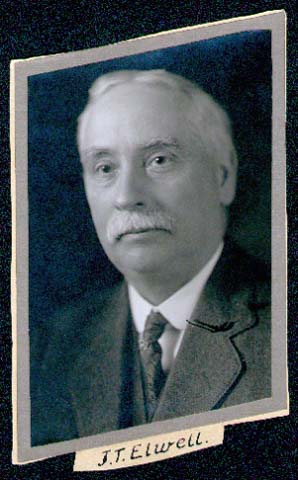James T. Elwell on:
[Wikipedia]
[Google]
[Amazon]
 James Tallmadge Elwell (July 1855 – August 1933) was a Minneapolis, Minnesota real estate developer and state legislator. He founded and developed the Como neighborhood in Minneapolis, where the
James Tallmadge Elwell (July 1855 – August 1933) was a Minneapolis, Minnesota real estate developer and state legislator. He founded and developed the Como neighborhood in Minneapolis, where the
 James Tallmadge Elwell (July 1855 – August 1933) was a Minneapolis, Minnesota real estate developer and state legislator. He founded and developed the Como neighborhood in Minneapolis, where the
James Tallmadge Elwell (July 1855 – August 1933) was a Minneapolis, Minnesota real estate developer and state legislator. He founded and developed the Como neighborhood in Minneapolis, where the Como Congregational Church
The Como Congregational Church is a historic church building in the Como, Minneapolis, Como neighborhood of Minneapolis, Minnesota. Opened in 1887 and designed by architect Charles Sumner Sedgwick, a Minneapolis master architect, the church is a ...
and the Tuttle School are historic structures of the period. Later in his career, he played a major role in the public financing of the Minneapolis park system, the expansion of the University of Minnesota campus, and served as president of the Minneapolis Planning Commission.
Career
After some early success as an inventor and manufacturer, Elwell turned in the 1880s to activities in real estate and city development. The Elwell Additions to Minneapolis, known as the Minneapolis Como neighborhood, were notable in the number of houses Elwell constructed and for the beauty of its elm-lined streets that he planted. For this real estate development, he applied his gift for practical invention to devise effective drainage of marshy areas into buildable residential lots. Elwell participated very actively in community life, seeking a park, improved streetcar service, and other amenities for the area, through Como Improvement Association activity centered at theComo Congregational Church
The Como Congregational Church is a historic church building in the Como, Minneapolis, Como neighborhood of Minneapolis, Minnesota. Opened in 1887 and designed by architect Charles Sumner Sedgwick, a Minneapolis master architect, the church is a ...
. In line with his intentions, the neighborhood had a notable demographic blend of blue collar residents (often associated with the adjacent railroad and milling industries on the main lines between St. Paul and Minneapolis), white collar office professionals, and faculty and staff of the adjacent University of Minnesota. The neighborhood and its founding represent the industrial expansion period in the U.S. After a period developing farming and dairying enterprises in nearby Anoka county, he resided in Como near Van Cleve Park
A van is a type of road vehicle used for transporting goods or people. Depending on the type of van, it can be bigger or smaller than a pickup truck and SUV, and bigger than a common car. There is some varying in the scope of the word across th ...
until his death in 1933.
Legislator
Elwell as a state legislator succeeded in providing an important funding mechanism for the city to fund the acquisition of parks, parkways and other elements of the proposed Minneapolis park system. This 1911 "Elwell Law" was recognized by Minneapolis park superintendent Theodore Wirth as the key tool for parks funding and acquisition, during the period when the Minneapolis park system tripled in size and realized the grand vision of early planners such asHorace Cleveland
Horace William Shaler Cleveland (December 16, 1814 – December 5, 1900) was an American landscape architect. His approach to natural landscape design can be seen in projects such as the Grand Rounds in Minneapolis; Sleepy Hollow Cemetery in Con ...
. Writing in a 1946 survey of his career, Wirth acknowledged Elwell's instrumental role: "Let us now give special attention to the period 1911 to 1930, during which time the park system of the city was really perfected €¦Prior to 1911, there was no special assessment law permitting the assessments for improvements to park lands. The passage of the so-called Elwell Law 911provided that authority." Along with its designers and superintendents, Elwell as a public financing architect played a key role in creating one of the leading city park systems in the U.S.
As a state legislator representing the University of Minnesota campus, Elwell was responsible for funding appropriations providing the significant expansion of the campus, from the original Knoll area southward, as envisaged by a Cass Gilbert plan. Elwell's legislative efforts doubled the size of the main University campus on the east bank of the Mississippi, and enabled the construction of the Northrop Mall as the centerpiece of the campus.
He also supported legislation to begin construction of the state's trunk highway net. Aside from the park system, the city of Minneapolis applied the Elwell Law to other public works projects through a period when the city doubled in population. The ''Minneapolis Star'' eulogized Elwell's role in creating the public financing "under which the major share of Minneapolis' expansions and improvements have been carried out for 20 years," and that "scores of projects, which have marked the development of Minneapolis and the state, bear witness to his ambition, persistence and keen intellect."
References
{{DEFAULTSORT:Elwell, James Minnesota state senators 1855 births 1933 deaths American businesspeople in real estate 20th-century American legislators Businesspeople from Minneapolis 20th-century Minnesota politicians